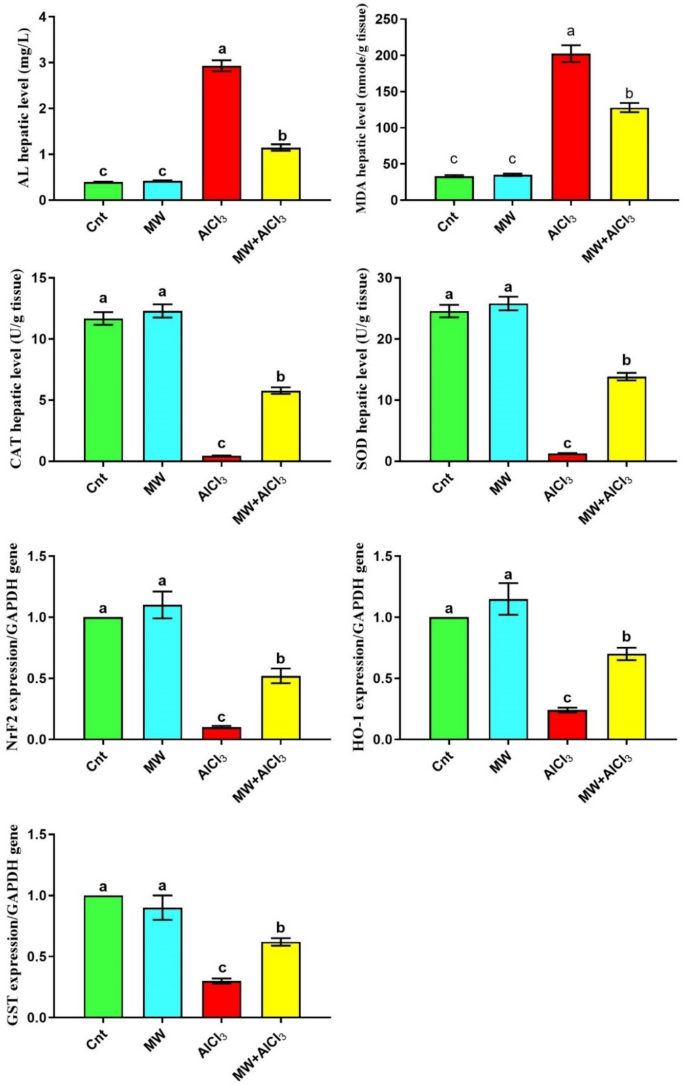Researchers have discovered that magnetic water (MW) can effectively protect against aluminum chloride (AlCl3)-induced liver toxicity in rats. AlCl3 is a common environmental pollutant that can accumulate in the body and cause significant damage to the liver, leading to various health issues. The study, published in the journal Scientific Reports, delves into the remarkable protective effects of MW and unravels the underlying mechanisms behind its therapeutic potential.

Aluminum Toxicity and Its Impact on the Liver
Aluminum is a ubiquitous element that is widely used in various products, including food additives, cookware, and cosmetics. However, prolonged exposure to aluminum can lead to its accumulation in the body, particularly in the liver, brain, and kidneys. This accumulation can trigger oxidative stress, inflammation, and endoplasmic reticulum (ER) stress, ultimately resulting in cellular damage and dysfunction.
Magnetic Water: A Powerful Antioxidant and Anti-Inflammatory Agent
Magnetic water, or MW, is water that has been filtered through a magnetic field, which alters its physical and chemical properties. This process increases the oxygen ratio, the velocity of salts, and the solubility of amino acids in the water, making it more malleable and easier to absorb. Importantly, MW has been shown to possess potent antioxidant and anti-inflammatory properties, making it a promising candidate for mitigating the damaging effects of aluminum exposure.

Protective Effects of Magnetic Water Against Aluminum-Induced Liver Toxicity
The researchers in this study divided rats into four groups: a normal control group, a MW group, an AlCl3 group, and an AlCl3 + MW group. The AlCl3 group was orally administered AlCl3 for two months, while the AlCl3 + MW group received both AlCl3 and MW during the same period.
The results were remarkable. The AlCl3 group exhibited clear signs of liver damage, as evidenced by elevated levels of liver enzymes (AST, ALT, ALP, and GGT) and bilirubin, as well as decreased levels of total proteins and albumin. In contrast, the AlCl3 + MW group showed significantly improved liver function, with reduced levels of these markers compared to the AlCl3 group.
Underlying Mechanisms: Antioxidant, Anti-Inflammatory, and ER Stress-Mitigating Properties
The researchers delved deeper to understand the mechanisms behind MW’s protective effects. They found that MW was able to:
1. Reduce oxidative stress: MW decreased the levels of the oxidative stress marker malondialdehyde (MDA) and increased the activities of antioxidant enzymes like superoxide dismutase (SOD) and catalase (CAT) in the liver.
2. Suppress inflammation: MW downregulated the expression of inflammatory genes, such as TNFα, IL1β, and NFκB, which were upregulated in the AlCl3 group.
3. Alleviate ER stress: MW attenuated the expression of ER stress-related genes, including XBP1, BIP, and CHOP, which were elevated in the AlCl3 group.

Histological Improvements and Potential Real-World Applications
The study also revealed that MW was able to restore the normal liver histology in the AlCl3 + MW group, with reduced signs of damage, such as central vein dilation, vacuolation, and inflammatory cell infiltration.
These findings suggest that MW could be a promising therapeutic intervention for individuals exposed to aluminum and at risk of developing liver damage. The ability of MW to target multiple pathways, including oxidative stress, inflammation, and ER stress, makes it a versatile and potentially effective solution.

Broader Implications and Future Research Directions
The protective effects of MW observed in this study could have broader implications for the management of other liver diseases and toxicities. Exploring the use of MW in the context of other hepatotoxic agents or in the treatment of chronic liver diseases could be an exciting area for future research.
Additionally, further investigations into the exact mechanisms by which MW exerts its beneficial effects, as well as its potential long-term safety and efficacy, will be crucial in advancing this field and paving the way for the clinical application of MW as a therapeutic intervention.
Author credit: This article is based on research by Safaa A. El-Shazly, Amani Alhejely, Hanan K. Alghibiwi, Sherifa F. M. Dawoud, Aisha M. Sharaf-Eldin, Azza A. Mostafa, Amina M. G. Zedan, Amany A. El-Sadawy, Mohammed A. El-Magd.
For More Related Articles Click Here
